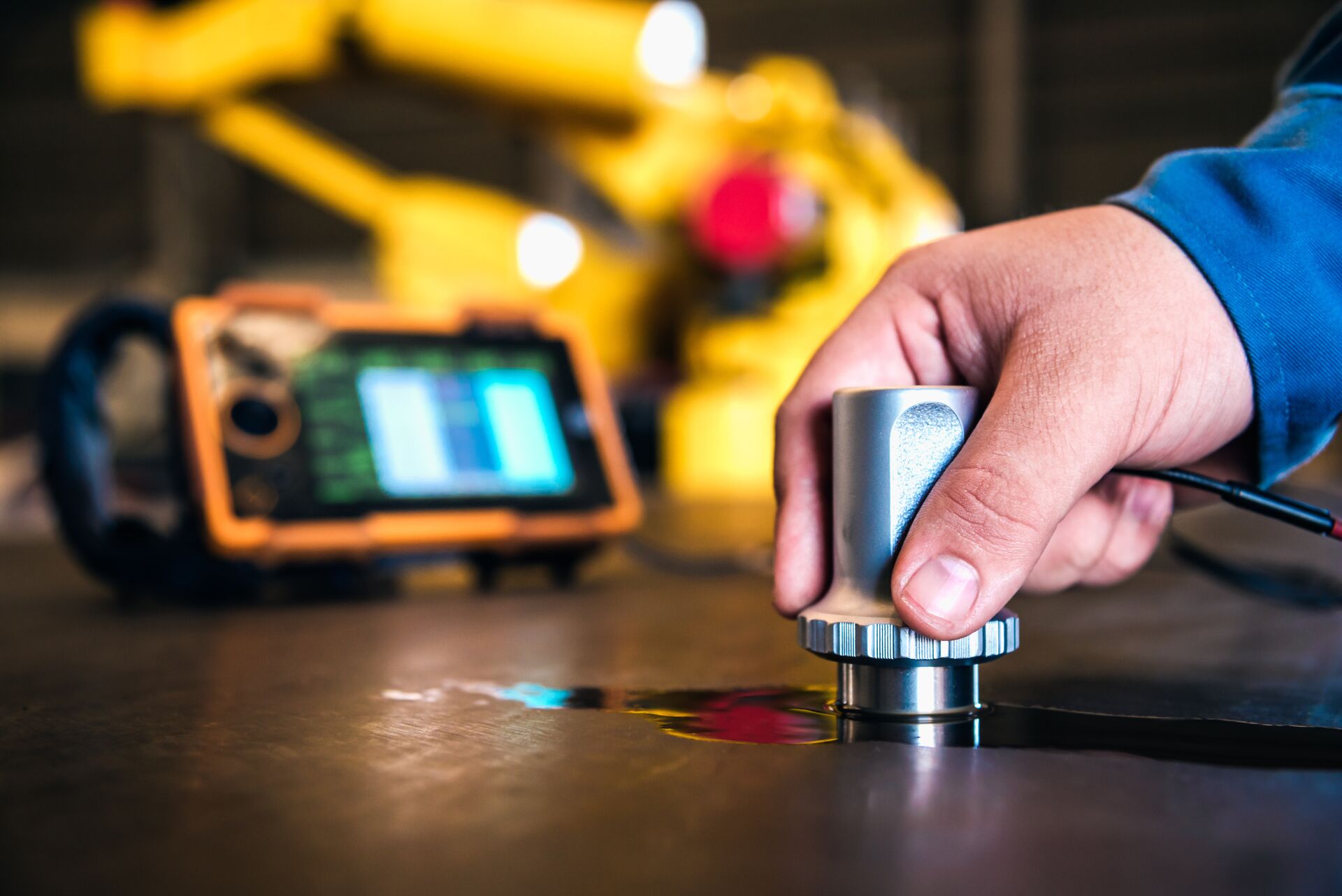Description
NDT is an effective method of metal testing that does not affect the very form or quality of the metal being tested. With this method, the reliability and safety of metals used in production facilities can be determined. Thus, the tendency for the potential breakdown of equipment as a result of poor quality is greatly reduced.
What We Provide
1. Radiographic Testing (RT)
Radiographic Testing utilizes X-ray or Gamma rays to examine the internal structure of materials. Advanced techniques like Digital Radiography and Computerized Radiography provide high-resolution images for accurate defect detection.it involves the following methods:
Ø X-Ray and Gamma Ray
Ø Digital Radiograph
Ø Computerized Radiograph
2. Ultrasonic Testing (UT)
Ultrasonic Testing employs high-frequency sound waves to detect subsurface and surface defects. Advanced methods like Phased Array and TOFD enhance accuracy and coverage for weld and structural inspections. involves the following methods:
Ø Weld Scan: Examines weld quality for cracks and porosity.
Ø Lamination Check: Detects separation or delamination in layered materials.
Ø Corrosion Survey & Thickness Check: Assesses material degradation and ensures compliance with thickness standards.
Ø Phased Array UT: Provides 3D imaging of flaws with superior resolution.
Ø TOFD (Time of Flight Diffraction): Accurate sizing and characterization of cracks in welds.
3. Magnetic Particle Inspection (MPI)
Magnetic Particle Inspection (MPI) is a testing method that uses a magnetic field to detect surface and near-surface flaws in ferromagnetic materials like iron, nickel, and cobalt, by applying magnetic particles which will be attracted to areas where the magnetic field is disrupted by a defect, essentially visualizing the flaw on the surface of the material; it's commonly used to identify cracks, laps, seams, and inclusions in components like welds or critical structural parts. involves the following methods:
Ø Wet continues method
Ø fluorescent method
Ø Dry powder method
Equipments used:
A/C Yoke
HWDC Yoke
Permanent Yoke
4.Liquid Penetrant Testing (LPT)
LPT reveals surface flaws in non-porous materials. Techniques include Solvent Removable and Fluorescent for increased sensitivity and visibility. It involves the following methods:
Ø Solvent removable Method
Ø Fluorescent Method
5. Magnetic Flux Leakage Testing (MFL Floor Mapping)
Magnetic Flux Leakage (MFL) floor mapping, refers to a technique where a magnetic field is induced in a metal floor (typically a tank floor made of steel) to detect and map areas of material loss or defects like corrosion and pitting by measuring the "leakage" of the magnetic flux at these points, essentially providing a detailed picture of the floor's integrity without damaging it; it's a widely used method in industries like oil and gas to ensure the safety of storage tanks.
6.Vaccum Box Test (VBT)
Vacuum Box Testing uses a vacuum to detect leaks. A vacuum is created inside a sealed chamber and the pressure difference between the inside and outside of the chamber is monitored. Any leaks will result in a pressure drop inside the chamber, indicating the presence of a leak. Types of VBT are:
Ø Flat Vacuum Boxes
Ø Corner Vacuum Boxes
Ø 3-Way Inside Corner Box
Optional Accessories : Vaccum Pump
7. Positive Material Identification (PMI)
PMI is a method used to verify the chemical composition of a material, typically a metal alloy, by analyzing its elemental makeup without damaging the material, essentially confirming if the material matches the required specifications and standards for a particular application; it's considered a crucial quality control measure across various industries like oil and gas, power generation, and aerospace.
8.Ferrite Testing
Ferrite Testing in NDT refers to a method used to measure the percentage of ferrite present in a material, primarily in stainless steels, by utilizing a magnetic probe to assess its magnetic permeability, allowing for evaluation of corrosion resistance and mechanical properties without damaging the material itself; it's commonly used on welds and components made from austenitic and duplex stainless steels to ensure proper material quality and performance.
9. Hardness Test
Hardness test is a non-destructive testing (NDT) method used to determine the resistance of a material to deformation, wear, and abrasion. It measures the hardness of a material, which is a critical property in evaluating its suitability for various applications.
Determine the resistance of your materials to wear, abrasion, and deformation with our Hardness Test service. Using advanced equipment like Rockwell, Brinell, or Vickers hardness testers, our experts assess the hardness of metals, alloys, and other materials, providing valuable insights for quality control, material selection, and product development.
10. Boroscopic Inspection
Boroscopic inspection, also known as borescope inspection, is a non-destructive testing (NDT) method that uses a flexible or rigid tube with a camera and light on the end to visually inspect the internal surfaces of boilers, heat exchangers, and other industrial equipment.
Benefits
- Safety Assurance: Ensures the reliability and safety of critical components without compromising their usability.
- Cost Efficiency: Prevents expensive downtime and failures through early detection of defects.
- Compliance: Meets stringent industry standards and regulations.
- Environmental Sustainability: Minimizes waste by reducing unnecessary material removal and replacements.





